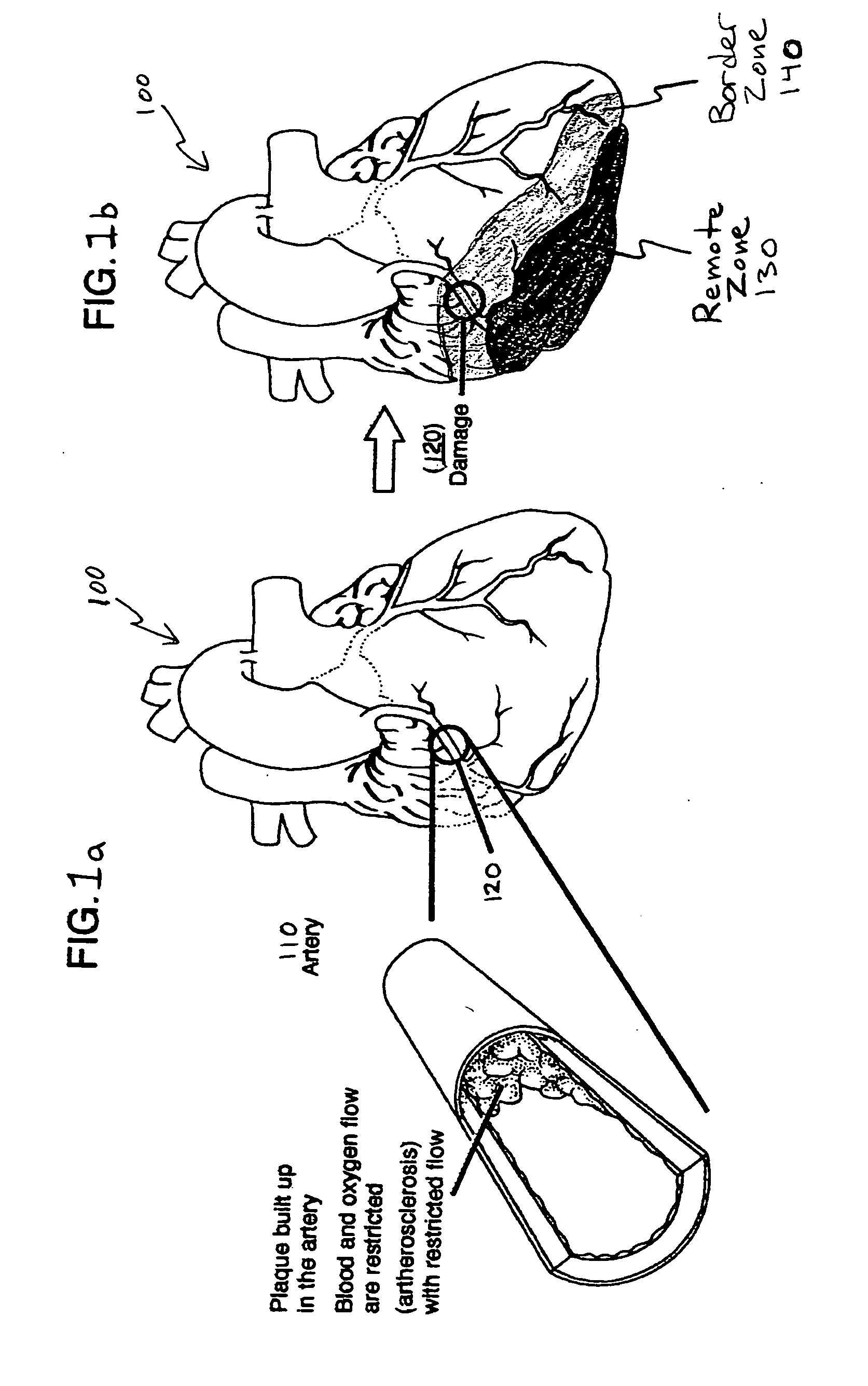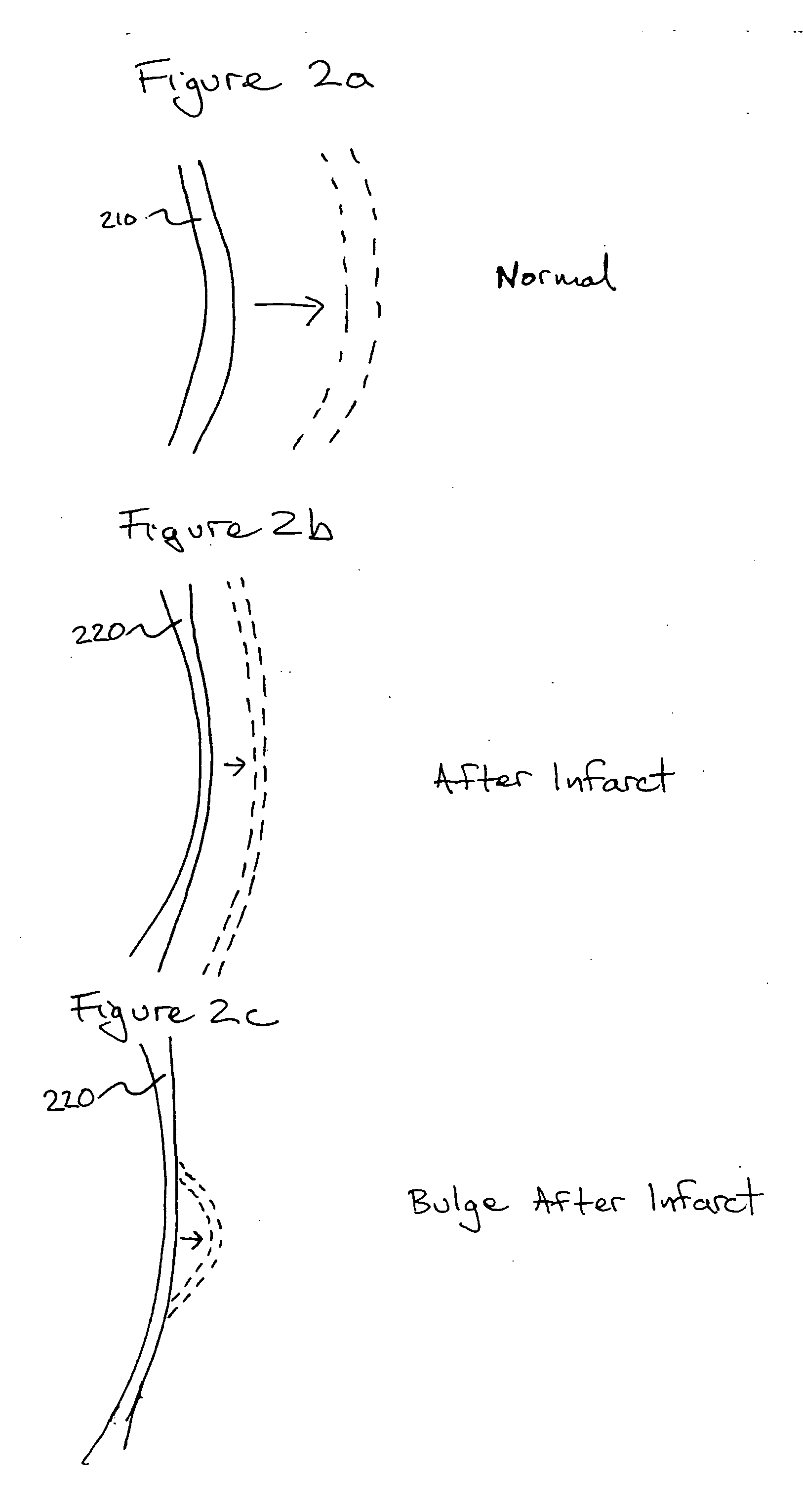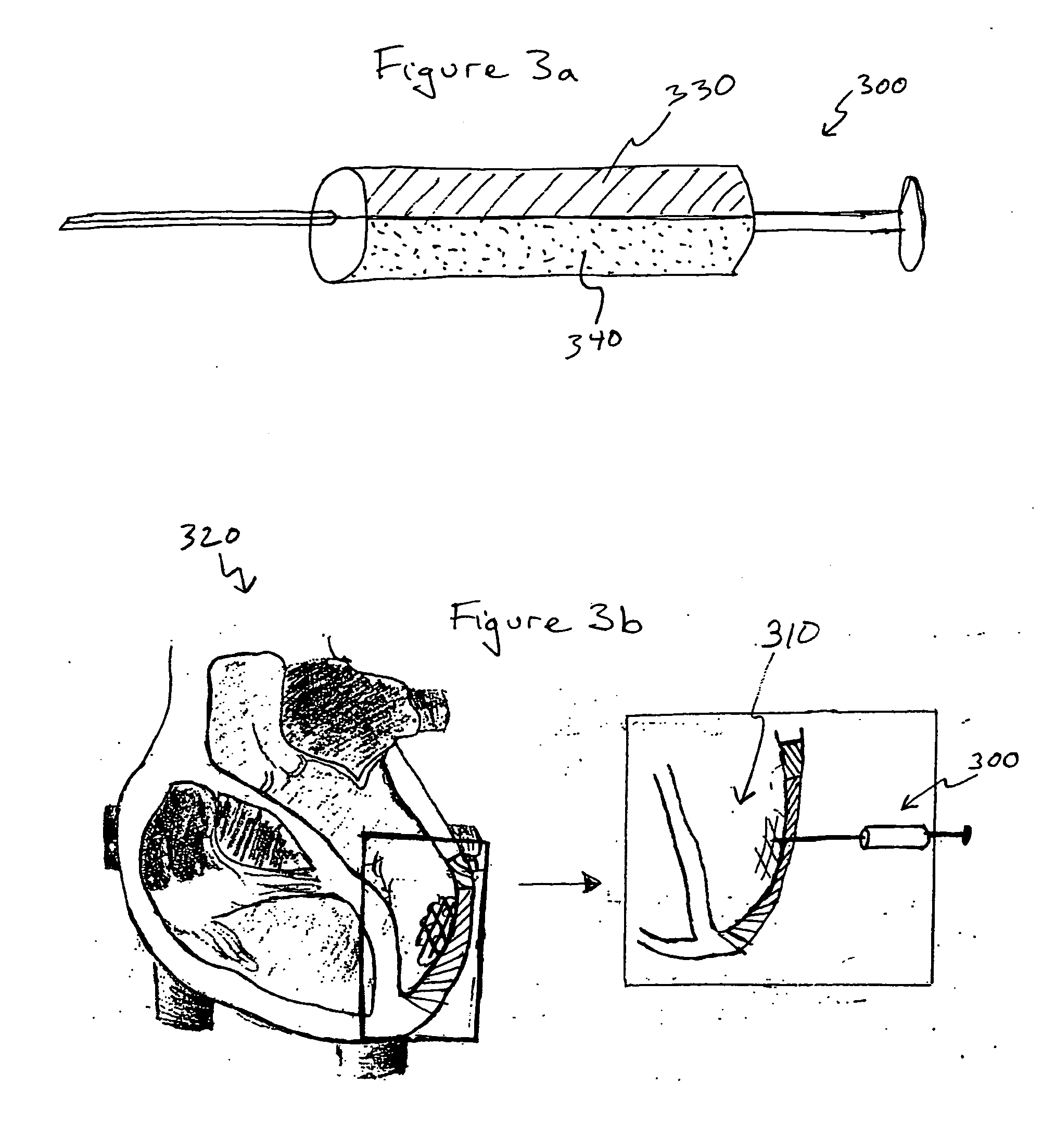Hydrogel bioscaffoldings and biomedical device coatings
a bioscaffolding and hydrogel technology, applied in the direction of drugs, extracellular fluid disorder, prosthesis, etc., can solve the problems of uneven stress and strain distribution in the left ventricle, blockage of blood flow, and cellular damage downstream, and achieve the effect of increasing stem cell releas
- Summary
- Abstract
- Description
- Claims
- Application Information
AI Technical Summary
Benefits of technology
Problems solved by technology
Method used
Image
Examples
Embodiment Construction
[0038] In the following section, several embodiments of, for example, processes, compositions, devices and methods are described in order to thoroughly detail various embodiments. It will be obvious though, to one skilled in the art that practicing the various embodiments does not require the employment of all or even some of the specific details outlined herein. In some cases, well known methods or components have not been included in the description in order to prevent unnecessarily masking various embodiments.
[0039] Bioscaffoldings formed of hydrogels that are crosslinked in situ in an infarcted region of the heart (myocardium) are described. The hydrogels may be crosslinked to form a bioscaffolding by a Michael's addition reaction or by disulfide bonds formed by an oxidative process. Angiogenesis in an infarcted region of a heart (myocardium) may be induced by forming a bioscaffolding in the infarct region to provide mechanical support and to accelerate angiogenesis. Angiogenes...
PUM
| Property | Measurement | Unit |
|---|---|---|
| Fraction | aaaaa | aaaaa |
| Fraction | aaaaa | aaaaa |
| Volume | aaaaa | aaaaa |
Abstract
Description
Claims
Application Information
 Login to View More
Login to View More - R&D
- Intellectual Property
- Life Sciences
- Materials
- Tech Scout
- Unparalleled Data Quality
- Higher Quality Content
- 60% Fewer Hallucinations
Browse by: Latest US Patents, China's latest patents, Technical Efficacy Thesaurus, Application Domain, Technology Topic, Popular Technical Reports.
© 2025 PatSnap. All rights reserved.Legal|Privacy policy|Modern Slavery Act Transparency Statement|Sitemap|About US| Contact US: help@patsnap.com



